Abstract
Thymidine at levels as low as 0.05 mg/1 reduces the activities of sulphamethoxazole and trimethoprim and their combination in vitro. Using a biological assay procedure, levels of thymidine greater than this were interpreted as being present in urine. The addition of sulphamethoxazole and trimethoprim, singly or in combination, to urine obtained from patients with urinary tract infections showed that all the antibacterial effect towards sensitive organisms was due to the trimethoprim component. It is suggested that trimethoprim should replace the combination co-trimoxazole for the treatment of some lower urinary tract infections, and that laboratory media, if they are to resemble the clinical environment, should contain thymidine.
Full text
PDF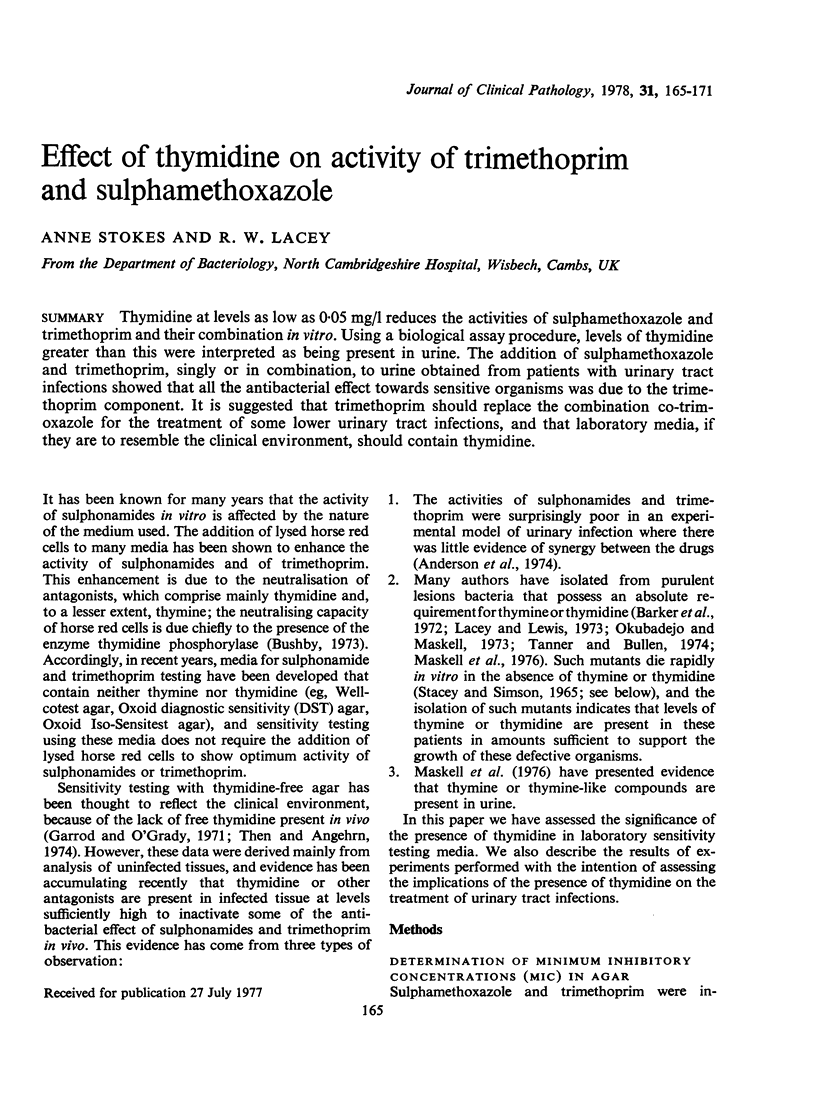
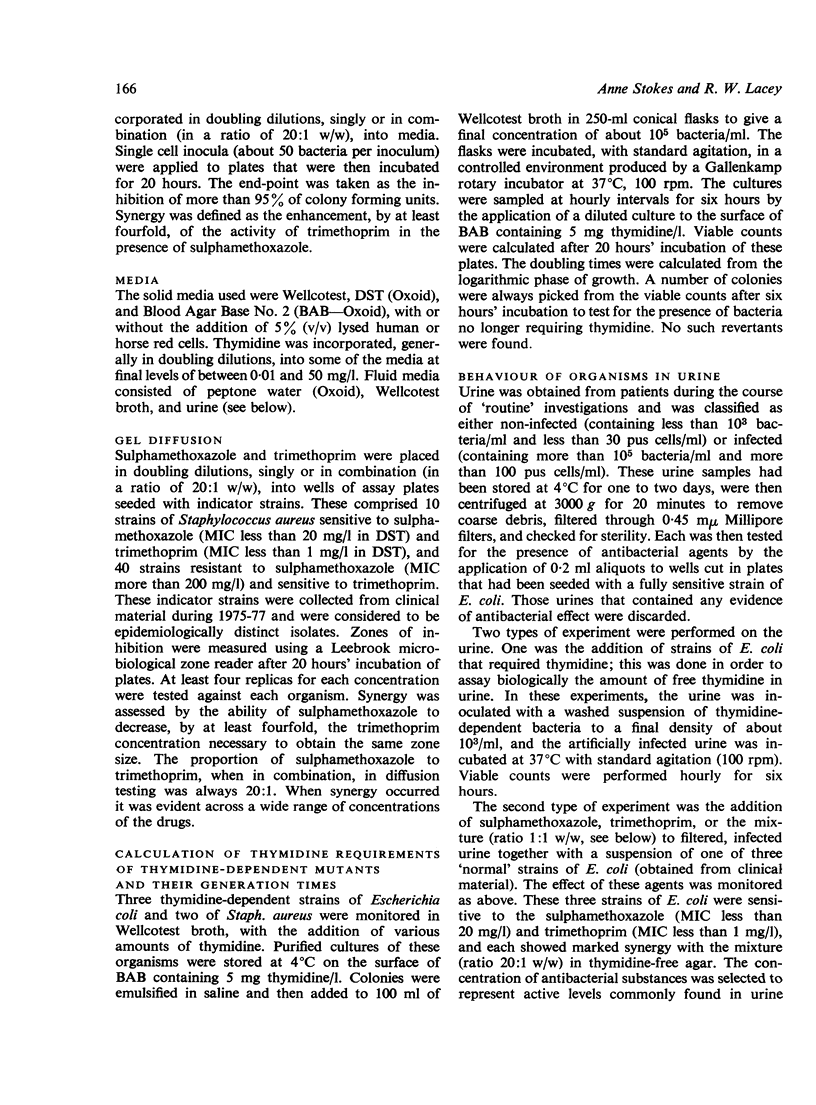
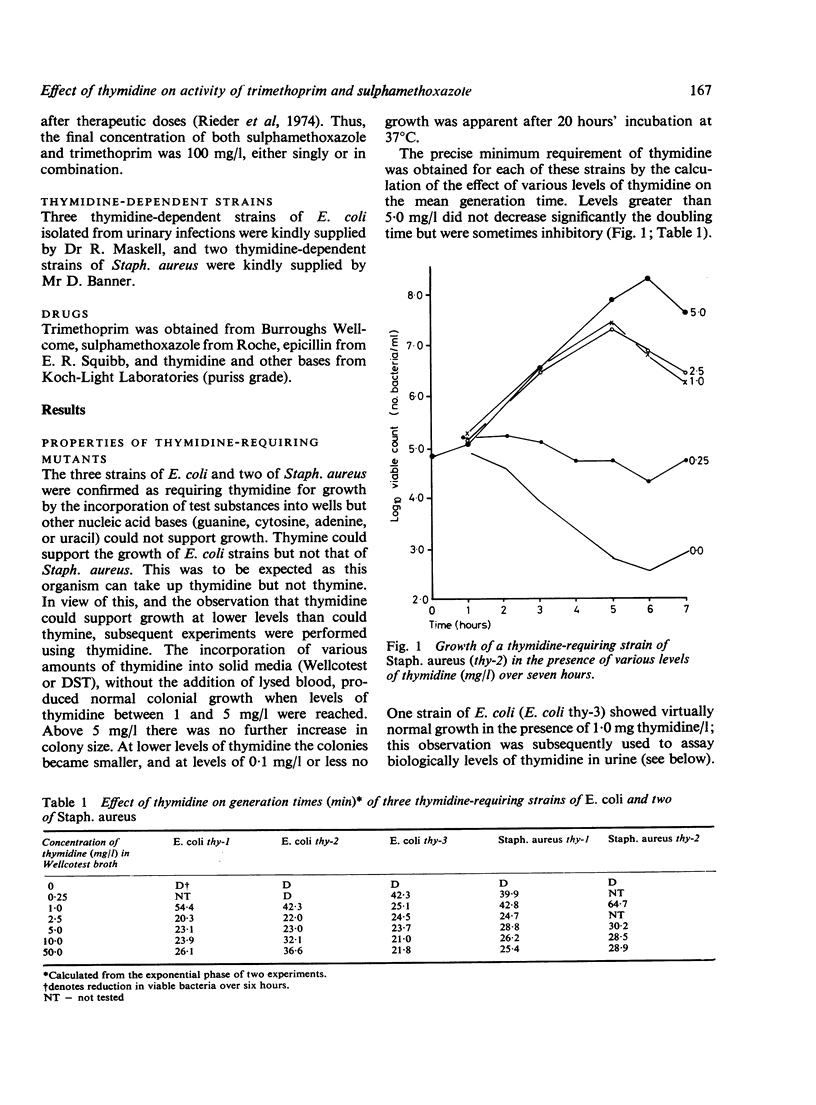
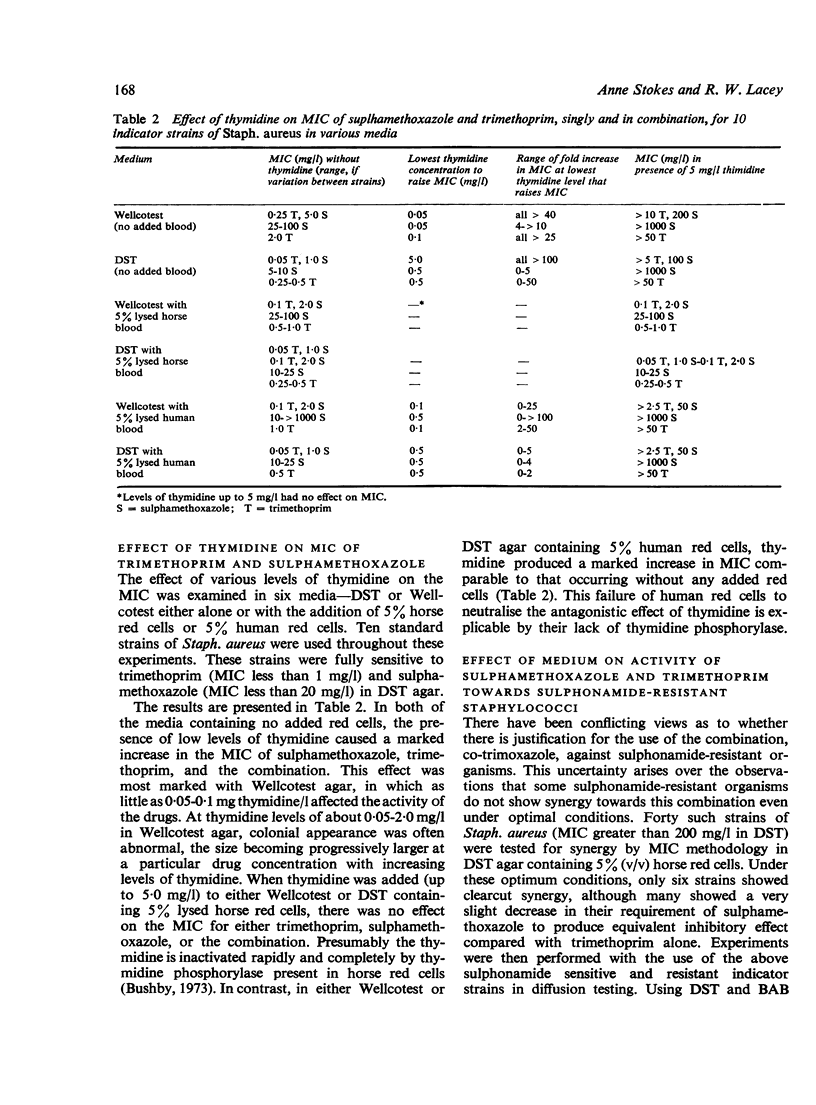
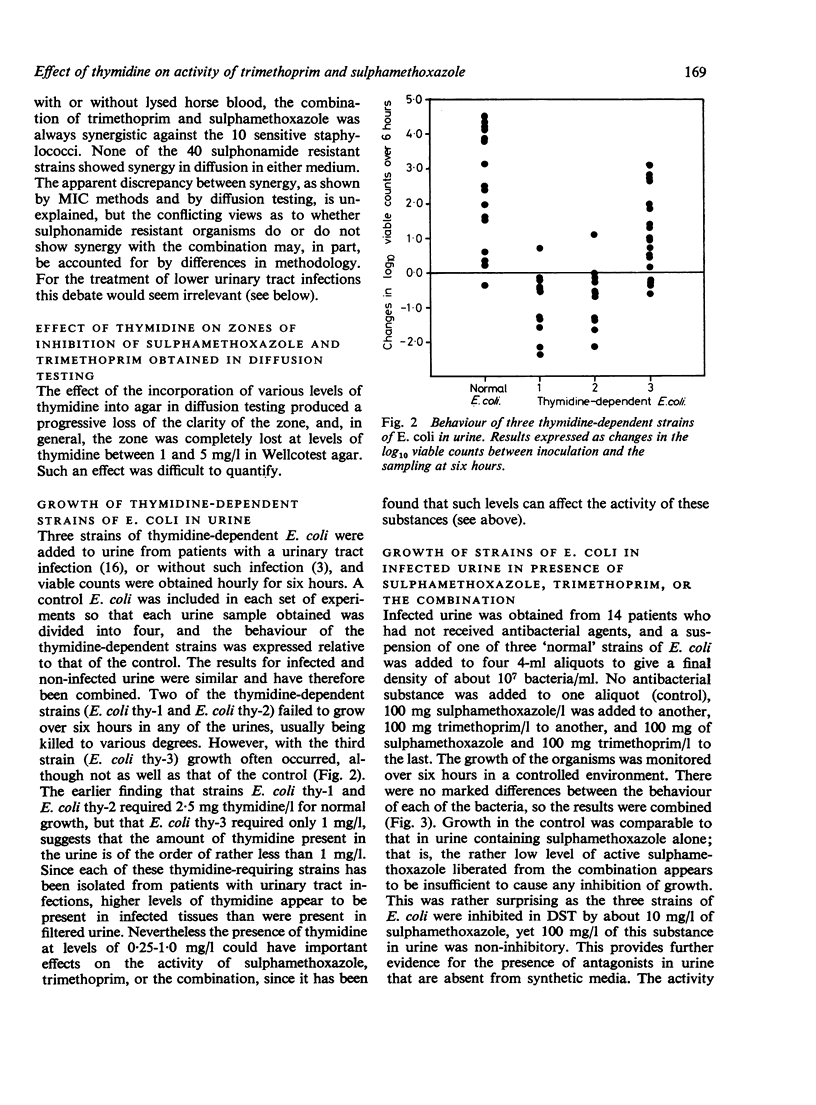
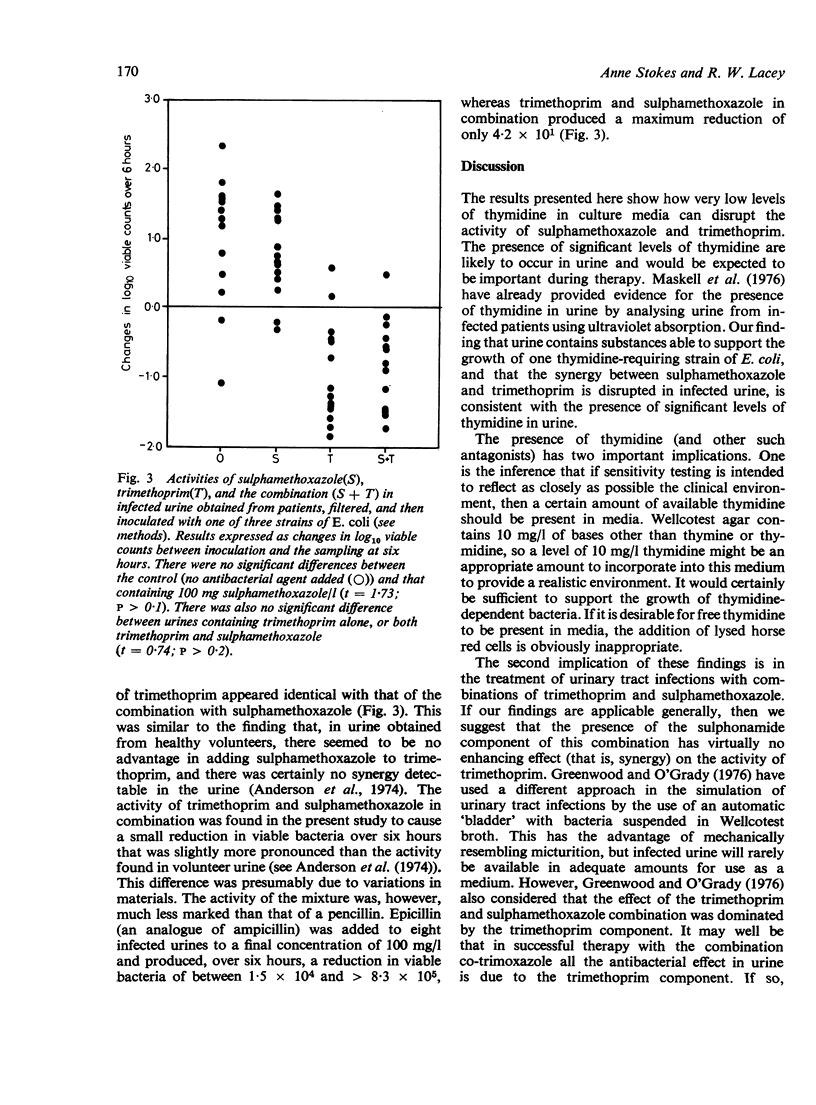
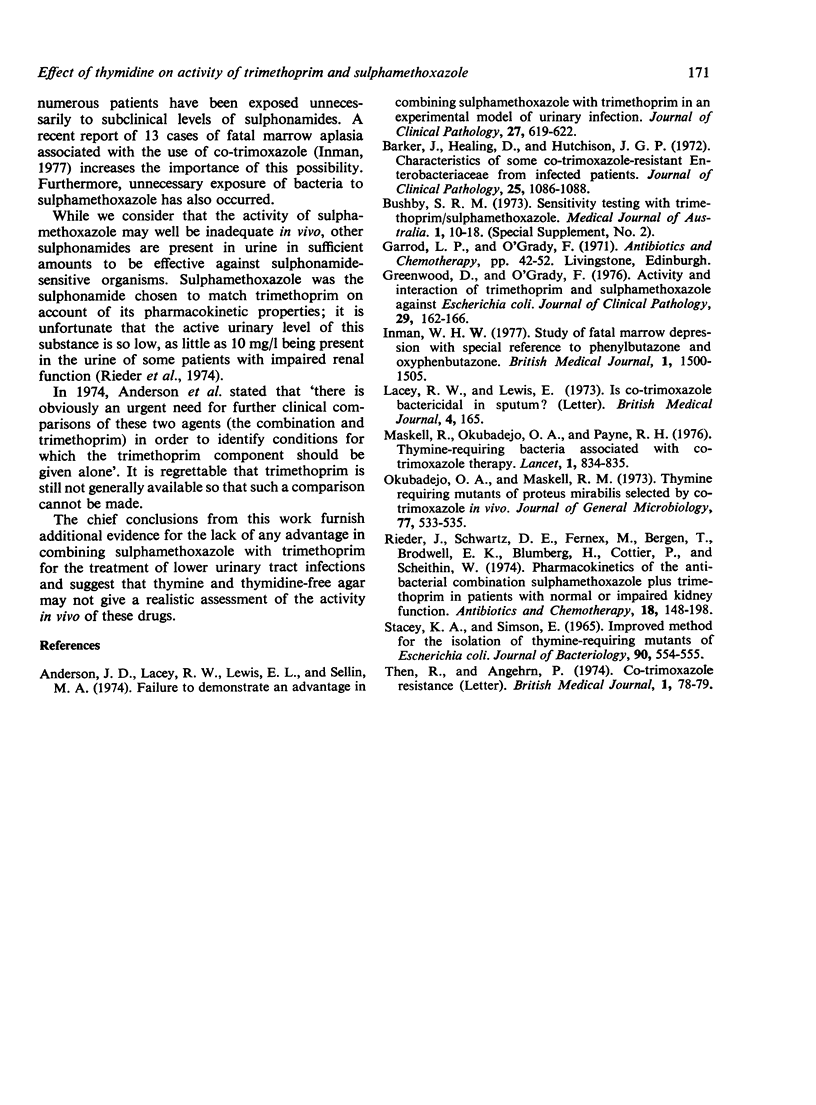
Selected References
These references are in PubMed. This may not be the complete list of references from this article.
- Anderson J. D., Lacey R. W., Lewis E. L., Sellin M. A. Failure to demonstrate an advantage in combining sulphamethoxazole with trimethoprim in an experimental model of urinary infection. J Clin Pathol. 1974 Aug;27(8):619–622. doi: 10.1136/jcp.27.8.619. [DOI] [PMC free article] [PubMed] [Google Scholar]
- Barker J., Healing D., Hutchison J. G. Characteristics of some co-trimoxazole-resistant Enterobacteriaceae from infected patients. J Clin Pathol. 1972 Dec;25(12):1086–1088. doi: 10.1136/jcp.25.12.1086. [DOI] [PMC free article] [PubMed] [Google Scholar]
- Greenwood D., O'Grady F. Activity and interaction of trimethoprim and sulphamethoxazole against Escherichia coli. J Clin Pathol. 1976 Feb;29(2):162–166. doi: 10.1136/jcp.29.2.162. [DOI] [PMC free article] [PubMed] [Google Scholar]
- Inman W. H. Study of fatal bone marrow depression with special reference to phenylbutazone and oxyphenbutazone. Br Med J. 1977 Jun 11;1(6075):1500–1505. doi: 10.1136/bmj.1.6075.1500. [DOI] [PMC free article] [PubMed] [Google Scholar]
- Lacey R. W., Lewis E. Letter: Is co-trimoxazole bactericidal in sputum? Br Med J. 1973 Oct 20;4(5885):165–165. doi: 10.1136/bmj.4.5885.165-b. [DOI] [PMC free article] [PubMed] [Google Scholar]
- Maskell R., Okubadejo O. A., Payne R. H. Thymine-requiring bacteria associated with co-trimoxazole therapy. Lancet. 1976 Apr 17;1(7964):834–835. doi: 10.1016/s0140-6736(76)90482-7. [DOI] [PubMed] [Google Scholar]
- Okubadejo O. A., Maskell R. M. Thymine-requiring mutants of Proteus mirabilis selected by co-trimoxazole in vivo. J Gen Microbiol. 1973 Aug;77(2):533–535. doi: 10.1099/00221287-77-2-533. [DOI] [PubMed] [Google Scholar]
- Rieder J., Schwartz D. E., Fernex M., Bergan T., Brodwall E. K., Blumberg A., Cottier P., Scheitlin W. Pharmacokinetics of the antibacterial combination sulfamethoxazole plus trimethoprim in patients with normal or impaired kidney function. Antibiot Chemother (1971) 1974;18:148–198. doi: 10.1159/000395184. [DOI] [PubMed] [Google Scholar]
- STACEY K. A., SIMSON E. IMPROVED METHOD FOR THE ISOLATION OF THYMINE-REQUIRING MUTANTS OF ESCHERICHIA COLI. J Bacteriol. 1965 Aug;90:554–555. doi: 10.1128/jb.90.2.554-555.1965. [DOI] [PMC free article] [PubMed] [Google Scholar]
- Then R., Angehrn P. Letter: Co-trimoxazole resistance. Br Med J. 1974 Jan 12;1(5897):78–79. doi: 10.1136/bmj.1.5897.78-c. [DOI] [PMC free article] [PubMed] [Google Scholar]


